Anemia is a reduction in the number of erythrocytes (red blood cells) in the blood or the amount of hemoglobin responsible for binding oxygen. This feature makes erythrocytes accountable for transporting oxygen to the entire body's tissues. If too few of them are in the blood, compared to the whole body's need for oxygen, then not all tissues and organs will receive enough oxygen. What are the most common symptoms of anemia? Keep reading, and you’ll find out.
Anemia is a decrease in the amount of hemoglobin in the body. A decreased number of red blood cells and lower hematocrit levels could also be present.
Erythrocytes, or red blood cells, originate in the bone marrow and are in the bloodstream. It is because of them that the blood has its red color. Red blood cells are made in the bone marrow. The life cycle of red blood cells is about 120 days![]() , after which they are broken down in the spleen and liver, and the breakdown components are then reused to produce new blood cells. The healthy male body has about 5-6 million red blood cells per microliter of blood
, after which they are broken down in the spleen and liver, and the breakdown components are then reused to produce new blood cells. The healthy male body has about 5-6 million red blood cells per microliter of blood![]() (4-5 million/mcL in women). Inside red blood cell is hemoglobin – a protein that transports oxygen to all body cells. When there is too little hemoglobin, this condition is known as anemia.
(4-5 million/mcL in women). Inside red blood cell is hemoglobin – a protein that transports oxygen to all body cells. When there is too little hemoglobin, this condition is known as anemia.
Anemia may be accompanied by changes in blood counts, such as reduced red blood count (RBC), changes in red blood cell volume (MCV) depending on the cause, and decreased hematocrit index (HCT), which measures the ratio of the erythrocytes to the whole blood volume.
The severity of anemia![]() fluctuates in accordance with hemoglobin concentration:
fluctuates in accordance with hemoglobin concentration:
| Anemia severity | Hemoglobin level |
| Normal range | 14–17.0 g/dL (for men)12-15.0 g/dL (for women) |
| Mild | 10 g/dL to lower the limit of the norm |
| Moderate | 8.0-10.0 g/dL |
| Severe | 6.5-7.9 g/dL |
| Life-threatening | Less than 6.5 g/dL |
It is a common disease. According to the WHO![]() , 40% of children under 5, 30% of women, and 37% of pregnant women are anemic.
, 40% of children under 5, 30% of women, and 37% of pregnant women are anemic.
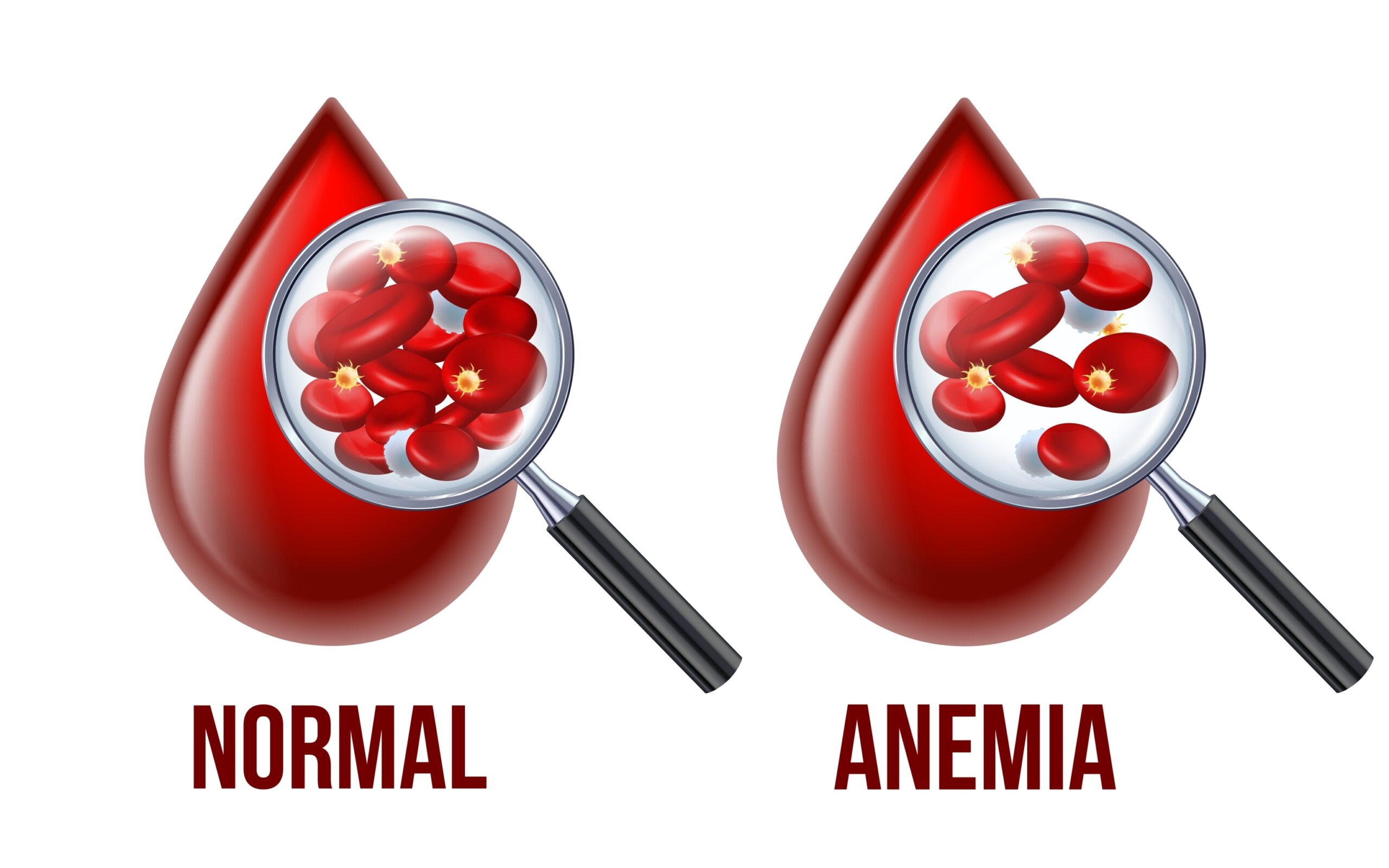
The following symptoms may occur in the course of anemia:
Other symptoms are associated with particular types of anemia. During the most common iron deficiency anemia, the patient's hair (brittle, thin, and fall out) and nails (pale, grooves and longitudinal stripes appear) condition deteriorates. In patients with iron deficiency anemia, weird cravings (the desire to eat chalk, raw rice, clay) are sometimes observed.
In the case of hemolytic anemia (due to abnormal breakdown of red blood cells), yellowing of the skin and enlargement of the liver and spleen may occur.
The state of hemoglobin and red blood cell deficiency worsens the body's functioning and causes various symptoms and complications. Very severe anemia can be life-threatening.
Anemia can have various causes. There are two main mechanisms responsible for its occurrence:
If the bone marrow lacks the necessary substances to build normal blood cells (iron, folic acid, vitamin B12), defective blood cells are formed. These cells are abnormal in shape and do not fulfill their function. Anemia can also occur when, despite adequate amounts of substrates, the bone marrow entirely or partially fails to function (called bone marrow aplasia or hypoplasia). The production of blood cells may also be disturbed during diseases of other tissues and organs, which indirectly affect the process of blood cell formation.
Iron deficiency anemia is the result of too little iron in the body. As a result, hemoglobin synthesis is impaired, and red blood cells are formed that are smaller than usual and contain less hemoglobin. This condition is identified as microcytic due to the reduced size of the blood cells. The mean corpuscular volume (MCV)![]() is identified during a blood test, with a value lower than 80fL (while a typical MCV falls between 80-100fL). This is the most common form of anemia. Treatment consists of using iron supplements and treating the possible cause of anemia.
is identified during a blood test, with a value lower than 80fL (while a typical MCV falls between 80-100fL). This is the most common form of anemia. Treatment consists of using iron supplements and treating the possible cause of anemia.
Anemia of chronic disease is the second most common type![]() . This condition usually appears several months after a person has been diagnosed with a persistent health issue such as:
. This condition usually appears several months after a person has been diagnosed with a persistent health issue such as:
Its severity is linked to the severity of the disease underlying it. Iron in the body cannot be utilized in red blood cell development during this type of anemia. The resolution of the anemia of chronic disease is obtained once the underlying issue has been adequately treated.
Megaloblastic anemia![]() is identified by atypically sizeable red blood cells (erythrocytes) in the bloodstream. In a blood test, the MCV value exceeds 100fL (normal is 80-100fL). A deficiency of vitamin B12 or folic acid causes it. The most common form is Addison-Biermer disease (pernicious anemia), in which the cause of vitamin B12 deficiency is malabsorption caused by the presence of autoantibodies against Castle intrinsic factor. A compound made in the stomach essential for the intake of vitamin B12 in the small intestine. Treatment consists of eliminating the cause of vitamin B12 and folic acid deficiency and appropriate supplementation.
is identified by atypically sizeable red blood cells (erythrocytes) in the bloodstream. In a blood test, the MCV value exceeds 100fL (normal is 80-100fL). A deficiency of vitamin B12 or folic acid causes it. The most common form is Addison-Biermer disease (pernicious anemia), in which the cause of vitamin B12 deficiency is malabsorption caused by the presence of autoantibodies against Castle intrinsic factor. A compound made in the stomach essential for the intake of vitamin B12 in the small intestine. Treatment consists of eliminating the cause of vitamin B12 and folic acid deficiency and appropriate supplementation.
Sideroblastic anemias![]() are a group of rare anemias in which the body cannot use iron effectively. Red blood cells (erythrocytes) contain too little hemoglobin, and the bone marrow contains so-called annular sideroblasts. Sideroblastic anemia can be congenital or acquired, resulting from lead poisoning, alcoholism, or side effects of certain medications. Treatment depends on the cause.
are a group of rare anemias in which the body cannot use iron effectively. Red blood cells (erythrocytes) contain too little hemoglobin, and the bone marrow contains so-called annular sideroblasts. Sideroblastic anemia can be congenital or acquired, resulting from lead poisoning, alcoholism, or side effects of certain medications. Treatment depends on the cause.
Hemorrhagic anemia results from bleeding: acute (for example, after an injury) or chronic, such as from the gastrointestinal tract or urinary tract. An adult can lose up to 20% of their blood volume![]() without symptoms of anemia. The signs felt by the patient will vary relying on the amount of blood lost as well as the speed of it. Treatment consists in removing the cause of bleeding. In massive bleeding, it may be necessary to transfuse blood.
without symptoms of anemia. The signs felt by the patient will vary relying on the amount of blood lost as well as the speed of it. Treatment consists in removing the cause of bleeding. In massive bleeding, it may be necessary to transfuse blood.
Hemolytic anemias![]() are diseases of various causes in which the abnormal breakdown of erythrocytes (red blood cells), called hemolysis, occurs. They can be congenital or acquired. Hemolysis can occur inside blood vessels, the liver, and the spleen. The signs of this disorder resemble those of other forms of anemia, as well as jaundice, enlarged spleen, and liver. Treatment depends on the cause of the hemolytic anemia.
are diseases of various causes in which the abnormal breakdown of erythrocytes (red blood cells), called hemolysis, occurs. They can be congenital or acquired. Hemolysis can occur inside blood vessels, the liver, and the spleen. The signs of this disorder resemble those of other forms of anemia, as well as jaundice, enlarged spleen, and liver. Treatment depends on the cause of the hemolytic anemia.
Aplastic anemia![]() is bone marrow failure resulting from hypoplasia (underdevelopment) or aplasia (loss of function). As a result, the bone marrow does not produce the correct number of red blood cells, white blood cells, and platelets.
is bone marrow failure resulting from hypoplasia (underdevelopment) or aplasia (loss of function). As a result, the bone marrow does not produce the correct number of red blood cells, white blood cells, and platelets.
In addition to the typical symptoms of anemia, there are symptoms associated with an insufficient number of white blood cells – fever, susceptibility to infection, and platelets – bruises on the skin and mucous membranes. The approach to dealing with this condition is determined by what causes it and how severe it is.
In the diagnosis, characteristic symptoms of anemia in the physical examination are essential. The primary test that enables the diagnosis of anemia is the complete blood count (CBC). CBC test provides information on the hemoglobin level, the size and number of erythrocytes, and the hematocrit level.
In addition to basic blood tests, the following may help determine the cause of anemia:
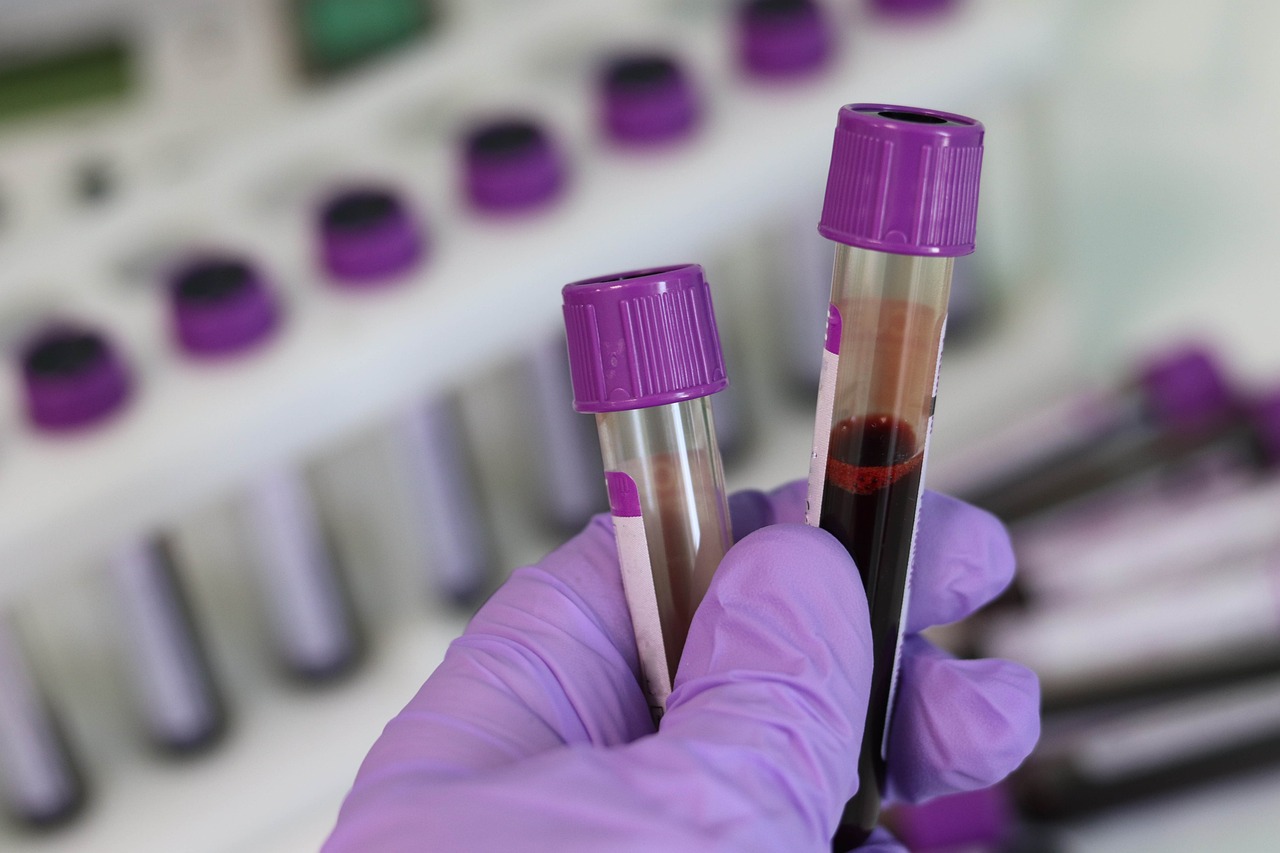
Some factors![]() may increase the chances of getting anemia:
may increase the chances of getting anemia:
Treatment of anemia![]() is varied and depends on the cause and severity of the anemia (it can be mild, moderate, severe, or life-threatening).
is varied and depends on the cause and severity of the anemia (it can be mild, moderate, severe, or life-threatening).
For example, iron deficiency anemia requires supplementation with oral iron preparations and an iron-rich diet.
In the case of vitamin B12 deficiency, it may be necessary to administer this vitamin by injections or supplementation.
If another disease is responsible for the anemia, treatment is based on combating the underlying condition. In anemia associated with chronic kidney disease, erythropoietin is recommended. In very serious instances of anemia, a blood transfusion may be required.
In some cases of aplastic anemia, bone marrow transplants or plasmapheresis (involving the switching of blood plasma) may be necessary. It should be remembered that the treatment may take many months, and the doctor may order control blood tests after treatment.

Iron deficiency anemia is the most common type of anemia. In many cases, it requires supplementation with appropriate doses of iron. However, it should be remembered that supplementation is only recommended with prior medical consultation and determining the cause of anemia.
A physician may advise taking supplements in addition to following a nutritious diet that contains iron-rich foods![]() . These include:
. These include:
The daily need for iron![]() varies between different groups of people:
varies between different groups of people:
| Men | 8mg |
| Women 19-50 years old | 18mg |
| Pregnant women | 27mg |
| During lactation | 9mg |
| Teenage boy 14-19 years old | 11mg |
| Adolescent girls 14-19 years old | 15mg |
| Postmenopausal women | 8mg |
One of the crucial factors determining how iron will be used is the presence of substances that reduce or increase its absorption in a given food product.
Vitamin C is the main factor promoting iron absorption. It is found mostly in vegetables and fruits. Other factors supporting iron absorption are organic acids, e.g., citric, malic, and lactic acid (present in pickled products). People with iron deficiency should avoid drinking coffee and tea as it reduces iron absorption from the intestines.
If left untreated, low hemoglobin levels can affect the body, causing various complications such as:
Iron deficiency is the most common cause of anemia during pregnancy. During pregnancy, the need for iron increases, especially in the third trimester, to about 27 mg per day![]() . The additional requirement for iron results from the increasing mass of red blood cells, the needs of the placenta and fetus, and perinatal blood loss at the end of pregnancy.
. The additional requirement for iron results from the increasing mass of red blood cells, the needs of the placenta and fetus, and perinatal blood loss at the end of pregnancy.
During pregnancy, there are other norms for hemoglobin![]() levels:
levels:
Anemia can adversely affect the course of pregnancy and delivery and the fetus or newborn. There is an increased risk of miscarriage, IUGR – intrauterine growth restriction![]() , and premature birth. In extreme cases, it can even lead to the intrauterine death of the fetus.
, and premature birth. In extreme cases, it can even lead to the intrauterine death of the fetus.
Prematurity is observed among newborns, and anemia may occur more often in later development.
A proper diet can help prevent anemia![]() caused by iron, vitamin B12, and folic acid deficiency. It is important to note that iron is most easily absorbed with vitamin C. In contrast, calcium supplements, dairy products, and the components contained in coffee and tea may prevent iron absorption.
caused by iron, vitamin B12, and folic acid deficiency. It is important to note that iron is most easily absorbed with vitamin C. In contrast, calcium supplements, dairy products, and the components contained in coffee and tea may prevent iron absorption.
However, iron supplements should not be used without medical consultation as its overdosage may damage the organs. A doctor may recommend supplementation in various cases – in pregnant women, premature babies, newborns in the risk group, and people on a chronic meat-free diet.
If you are experiencing any of the signs of anemia (tiredness, pallor, heart racing, etc.), it is recommended that you reach out to your doctor. Symptoms that require exceptionally prompt medical attention include fainting, shortness of breath, and yellowing of the skin and whites of the eyes.
A general practitioner treats mild forms of anemia. More severe forms of the disease are treated by a hematologist – a doctor specializing in diagnosing and treating conditions of the blood and hematopoietic system.
If the sickness is intense, it may be essential to be admitted to the hospital, e.g., for a blood transfusion.
Table of Contents
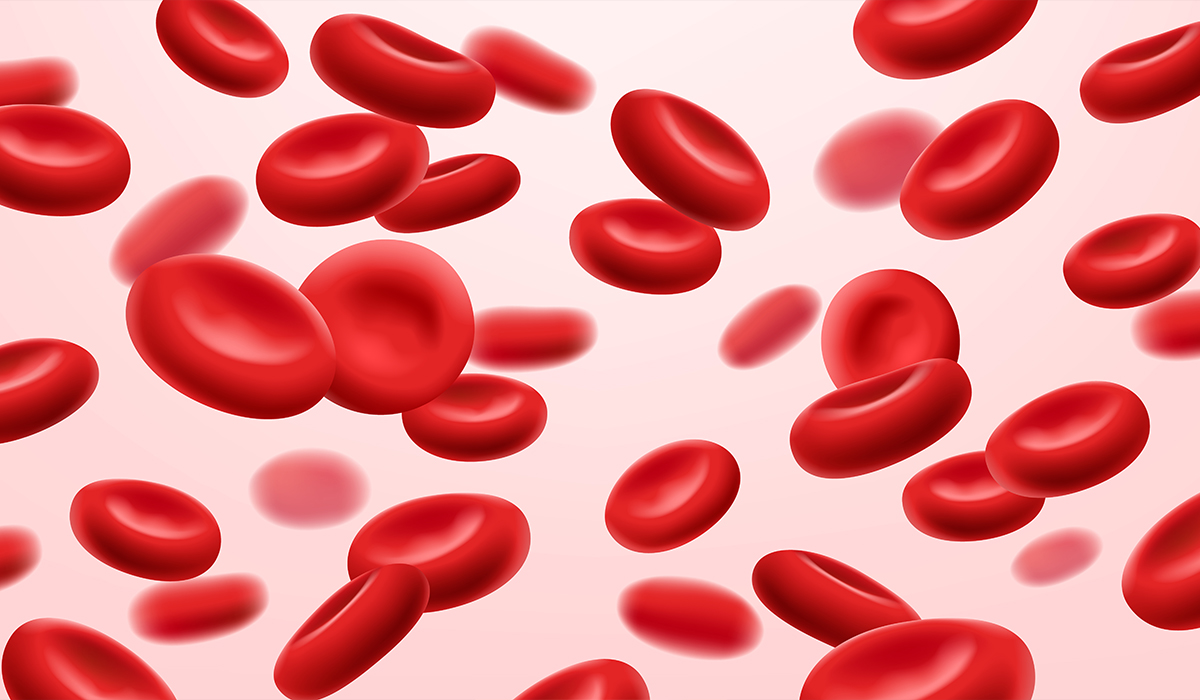
Hemoglobin is an important part of the blood. Its deficiency as well as excess negatively affects health. Learn about the… read more »

Aplastic anemia is an uncommon blood condition where the bone marrow works improperly. Get to know the ways to identify… read more »

Iron deficiency is a common nutritional disorder where the body lacks sufficient iron to produce an adequate amount of hemoglobin,… read more »

What should you eat to prevent vitamin B12 deficiency? What are the most common symptoms and who is particularly at… read more »
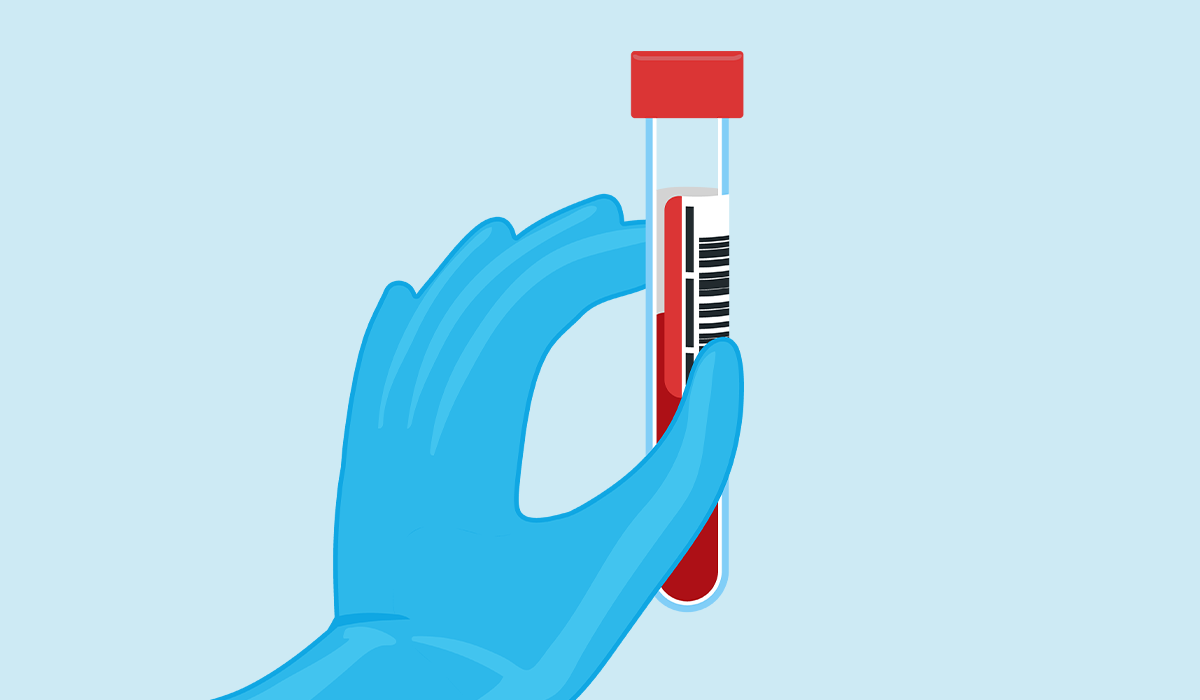
Morphology is a examination of the shape, size, and appearance of blood cells. When should you do it? read more »

Body needs vitamin B6 for correct functioning. Check out, where you can find this vitamin. What are the signs of… read more »
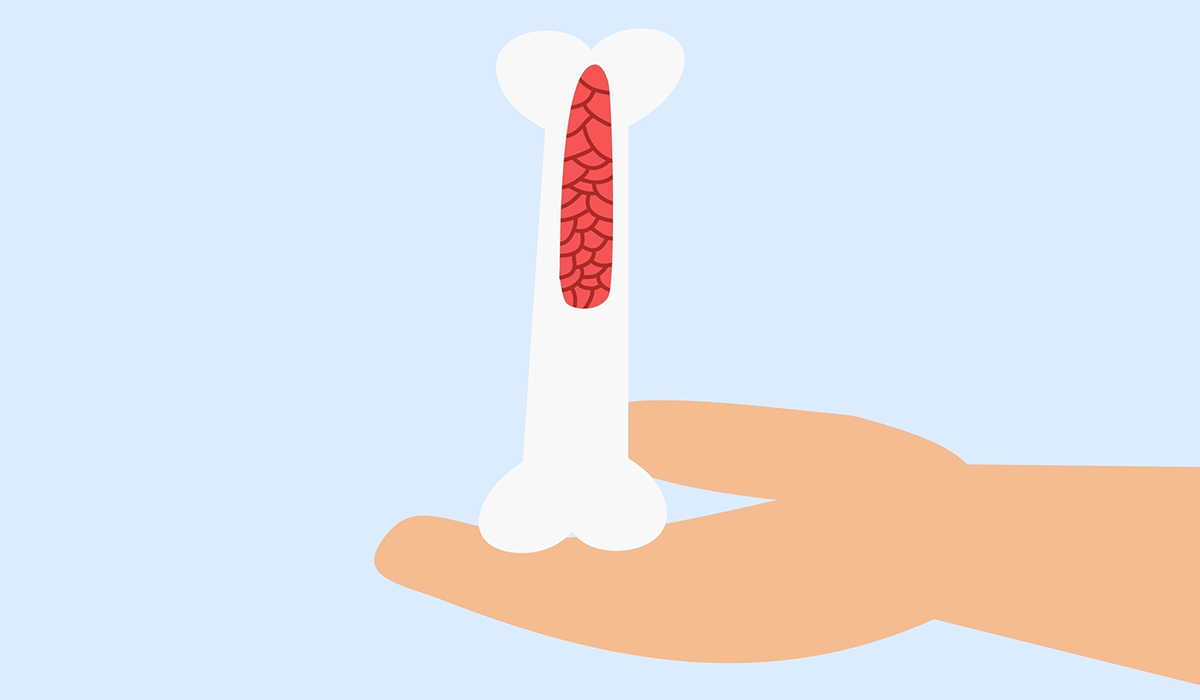
The bone marrow is an important part of the human body. Learn to recognise diseases that can occur when the… read more »

Vitamin A is one of the substances necessary for the proper functioning of the human body. Learn about its health… read more »

Vitamin C (ascorbic acid) is involved in processes in our bodies that provide correct functioning. Where you can find vitamin… read more »